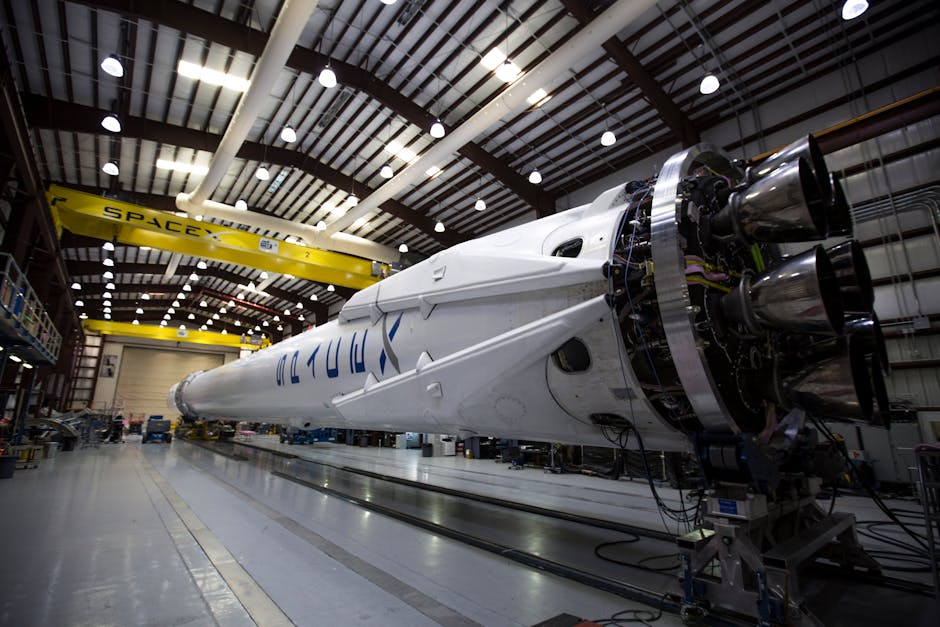SpaceX is preparing for Starship’s tenth flight test tonight. The launch window opens at 7:30 PM ET, weather permitting.
SpaceX’s Starship rocket is slated for its tenth flight test. The launch window commences this evening from the company’s Texas facility. Conditions are currently uncertain, with favorable weather reported at only 45 percent. Backup launch opportunities are scheduled for August 25 and 26.
This upcoming test follows a series of challenging flights this year. The seventh, eighth, and ninth test flights all encountered significant issues. Earlier in June, a Starship vehicle experienced an on-ground explosion. This incident occurred during preparation for a static fire test.
The mission objectives for Flight 10 are ambitious. If successful, Starship will deploy eight simulated Starlink satellites. The flight will also conduct experiments focused on Starship’s return capabilities. The upper stage is not expected to return to the launch site on this flight.
The expected duration of the test flight is slightly over one hour. The mission is planned to conclude with a splashdown. The designated splashdown zone is the Indian Ocean. These tests are critical for developing the fully reusable Starship system. Starship is designed for deep space exploration and orbital transport.
Previous flights have provided invaluable data for SpaceX. Each test contributes to understanding the complex dynamics of the massive rocket. The early failures highlight the inherent risks in pushing technological boundaries. SpaceX has consistently iterated and improved its designs based on flight results. This iterative process is key to their rapid development cycles.
Progress and Setbacks
The journey to a fully operational Starship has been marked by significant challenges. Flight tests have repeatedly pushed the envelope of rocket technology. Failures, while costly, have provided essential lessons learned. These lessons are immediately incorporated into subsequent designs and procedures. The company’s philosophy embraces rapid prototyping and learning from failures.
The Starship program aims for a fully reusable launch system. This reusability is key to reducing the cost of space access. Such a system could enable missions to the Moon and Mars. It also promises significant advancements in satellite deployment and orbital logistics. The development pace is unprecedented in the aerospace industry.
Each test flight represents a major milestone. The progress made is evident in the increasing complexity of mission objectives. Flight 10 includes satellite deployment and advanced atmospheric testing. These elements are crucial steps toward operational capability. The data gathered will inform future design modifications. It will also refine operational procedures.
The sheer scale of Starship is awe-inspiring. Standing over 400 feet tall, it is the largest rocket ever built. Its booster, Super Heavy, is powered by numerous Raptor engines. The Starship upper stage also features powerful Raptor engines. Together, they create immense thrust for orbital ascent.
The company’s testing facility in Boca Chica, Texas, is a hub of innovation. It is here that these colossal machines are assembled and launched. The environment fosters a culture of intense development and rapid iteration. Engineers work tirelessly to refine every aspect of the system. Public interest in the program remains exceptionally high.
SpaceX’s commitment to reusability sets it apart. This focus is fundamental to achieving ambitious space exploration goals. The company believes that frequent flights are essential for driving down costs. Starship embodies this philosophy with its design for rapid turnaround. This approach contrasts with traditional aerospace development models.
The recent ground explosion during a static fire test underscores the risks. This incident serves as a stark reminder of the challenges involved. However, SpaceX has a history of overcoming such setbacks. Their resilience in the face of adversity is a defining characteristic. The focus now shifts to the next opportunity for flight.
Future Aspirations
The ultimate goal of Starship is to facilitate human settlement on other planets. SpaceX envisions Starship as the vehicle that will make this possible. This ambitious vision drives the relentless pursuit of perfection. The current test flights are laying the groundwork for future interplanetary missions. They are also crucial for establishing robust orbital infrastructure.
The potential applications of Starship are vast and varied. Beyond human spaceflight, it can launch large payloads into orbit. This includes constellations of satellites for communication and Earth observation. It could also support scientific research and asteroid mining initiatives. The system’s versatility is a significant advantage.
According to SpaceX’s own mission summaries, the primary objective of these flight tests is to gather data that will inform the design and operation of the fully reusable Starship system. Each test flight is a critical step in validating numerous complex subsystems and demonstrating operational capabilities necessary for future missions to the Moon, Mars, and beyond. This iterative testing approach has allowed the company to make rapid advancements and de-risk future development phases, crucial for achieving their ambitious long-term goals.
The successful deployment of dummy satellites during Flight 10 would be a notable achievement. It would demonstrate the Starship upper stage’s ability to carry and release payloads. This capability is essential for commercial and scientific applications. The success of these deployments is a key metric for progress.
Experiments focused on the upper stage’s return are also significant. Learning to land Starship and its booster safely is paramount. This capability enables the full reusability envisioned by SpaceX. Mastering propulsive landings in diverse environments is a complex engineering feat. Each attempt provides valuable data on control and atmospheric entry.
The successful execution of Flight 10, including the splashdown, would mark substantial progress. It would validate many of the design choices made. The data collected will be thoroughly analyzed by engineers. This analysis will guide the next iteration of Starship development. It also builds confidence in the system’s potential.
The ongoing development of Starship represents a paradigm shift in space exploration. It pushes the boundaries of what is technologically feasible. The program’s successes and failures alike contribute to a wealth of knowledge. This knowledge is essential for the future of space activities. SpaceX continues to lead this charge with its bold vision.
The company’s rapid cadence of testing is a hallmark of its operational style. This allows for quick adaptation and improvement. The focus remains on achieving a fully functional and reusable Starship system. The implications for space commerce and exploration are profound. The world watches closely as this ambitious project unfolds.
SpaceX aims to advance Starship’s capabilities with its tenth flight test. The outcome will provide crucial data for future development. Preliminary analysis of test results is expected in the coming days.




